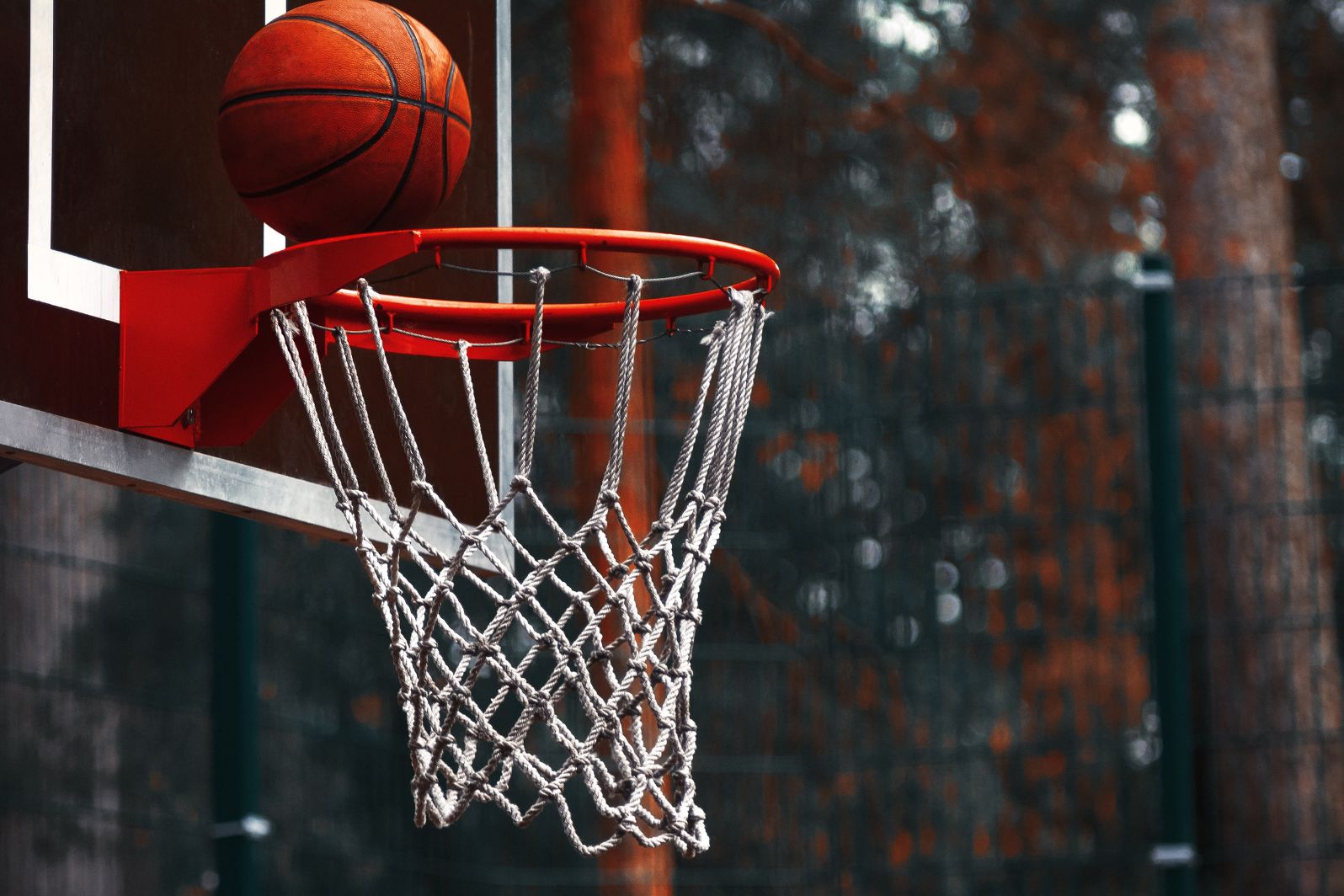In their rich history, the L.A. Lakers have struck gold in the NBA Draft plenty of times. But which draft classes were the most fruitful for them?
To answer that, we need to go quite a long way back. From 1948 to 2023, the Lakers drafted over 400 players. For the purpose of this exercise, we’ll count the undrafted players and draft-day acquisitions as well.
Ready to take a walk down memory lane? If so, here are the greatest rounds in Lakers draft history!
Table of Contents
2007 NBA Draft, Round 2: Mark Gasol, Sun Yue
To keep this list reasonably short, we’ll focus on players who actually played for the Lakers. With this stipulation, Mark Gasol gets in on a technicality.
Though the Lakers drafted Gasol in 2007, he didn’t come to the NBA right away. When he did come over, the Lakers traded him to the Grizzlies for his brother, Pau. In Memphis, he blossomed into a three-time All-Star.
After a successful decade in Memphis, Gasol went to Toronto. In his one year there, he was a key part of the Raptors winning the title. He finally returned to the Lakers in 2020, where he played his final NBA season.
As for Sun Yue, the Chinese forward didn’t make much of a mark in the NBA. After playing in ten games and averaging 0.8 points, he went back to China. Still, Gasol alone made this round a hit for the Lakers.
1989 NBA Draft, Round 1: Vlade Divac
These days, every NBA team has at least a couple of international players. Back in 1989, though, this wasn’t the case at all.
When the Lakers drafted Divac, he was the only foreign player taken in the first round. By producing right away, he proved these players have a place in the league. In his rookie season, he averaged 8.5 points and 6.2 rebounds.
After seven productive seasons in L.A., the Lakers traded Divac for draft rights to Kobe Bryant. Divac soon went to Sacramento, where he was a key cog for the Kings, the Lakers’ greatest rival of that era.
1977 NBA Draft, Round 1: Kenny Carr, Brad Davis, Norm Nixon
With three picks in the first round of the 1977 draft, the Lakers had plenty of reasons for excitement. As it turned out, they only needed one.
With their first two picks, they selected Kenny Carr and Brad Davis. Carr had constant injury issues and never lived up to expectations. Davis only played a single season in L.A. before becoming an NBA journeyman.
The Lakers made up for these misses by taking Norm Nixon at #22. Nixon made an immediate impact, averaging 13.7 points and 6.8 assists on the way to an All-Rookie First-Team selection. By 1982, he was an All-Star.
With Nixon playing point guard, the Lakers won two titles. However, he had the misfortune of getting drafted only a year before Magic Johnson. Due to the lack of available playing time, the Lakers traded Nixon in 1983.
2021 NBA Draft, Undrafted: Austin Reaves
Before the 2021 draft, several NBA teams wanted to draft Reaves in the second round. His agent, however, told them not to bother.
Pretty soon, those teams knew why Reaves wasn’t interested. Once he hit the free agent market, he was swiftly scooped up by the Lakers. In his second season with the team, he averaged 13 points in just 28 minutes per game.
As one of the league’s rising stars, Reaves signed a new contract with the Lakers in 2023. On top of that, he has his own Kicks Crew and Rigorer shoes. As it turned out, his agent did know what was best for him!
1949 NBA Draft, Territorial: Vern Mikkelsen
Speaking of exceptions, how about Vern Mikkelsen? Back in 1949, he was one of the league’s first (and most successful) territorial picks.
If you’re not a draft history expert, territorial picks are fairly simple. Before the draft, each team could forfeit a first-round pick and pick a player from its immediate area. The Lakers used this option with Mikkelsen.
The man known as the “Great Dane” went on to have a star-studded career. In his ten seasons with the Lakers, he made six All-Star games and contributed to four NBA titles. His #19 is now hanging in the Lakers’ rafters.
1985 NBA Draft, Round 1: A.C. Green
At first glance, Green’s stats won’t convince you he’s worth ranking this high. Dig a little deeper, though, and you’ll see his true worth.
For starters, Green was an excellent defender. This made him a great fit next to the Magic and Kareem-led Lakers of the late 80s. His defense on the Celtics’ Larry Bird was a huge part of the Lakers’ titles in 1987 and 1988.
Green was also known as the Iron Man. He still holds the record for most games played in a row, with 1,192 games. His durability allowed him to return to the Lakers in 2000 when he helped Kobe win his first championship.
1952 NBA Draft, Round 1: Clyde Lovellette
When people think of the dominant Lakers centers in the 1950s, they think of George Mikan. Well, Clyde Lovellette was right there with him.
Drafted at #9 in 1952, Lovellette played two seasons next to Mikan. He learned a lot during this time, as he soon became a consistent 20+ point scorer. This made him a key contributor to the Lakers’ 1954 title.
Lovellette only spent four seasons in L.A., but he remained a star for the rest of his career. He’s made four All-Star games and won two more titles with the Atlanta Hawks. The Lakers honored him by hanging his #34 in the rafters.
1978 NBA Draft, Round 3: Michael Cooper
With Magic, Kareem, and Worthy, the Showtime Lakers had no shortage of dazzling offensive stars. And then there was Michael Cooper.
Since getting drafted in 1978, Cooper had spent all 13 of his NBA seasons with the Lakers. During this time, he did whatever the team asked of him. He could play multiple positions and do all the dirty work next to Magic.
Of course, his true value came on the defensive end. The 1987 Defensive Player of the Year, Cooper was the team’s main weapon against Larry Bird. With his help, the Lakers won five titles throughout the 80s.
1965 NBA Draft, Territorial: Gail Goodrich
After leading UCLA to two NCAA titles, Goodrich emerged as a first-round talent. The Lakers knew that and selected him as a territorial pick in 1965.
Goodrich’s first stint with the Lakers lasted only three years. As a 6’1” guard without much playmaking talent, he didn’t have a defined position on the court. Still, he could score, and he did it efficiently and effortlessly.
Following a short stint in Phoenix, Goodrich returned to L.A. as a star. In 1972, he averaged 25.9 points while helping the Lakers win the title. He stayed with the team until 1976, racking up four All-Star appearances.
1958 NBA Draft, Round 1: Elgin Baylor
Speaking of guys who could score, how about Elgin Baylor? A teammate of Goodrich and a Lakers lifer, he averaged 27.4 points for his career.
Selected as the first pick in 1958, Baylor didn’t take long to get going. As a rookie, he averaged 24.9 points and 15 rebounds. For a Lakers team that finished last the previous season, he was the star they needed.
In his 14 years in L.A., Baylor made 10 All-Nba First-Teams and 11 All-Star games. From 1960 to 1963, he averaged 34.8, 38.3, and 34 points per season. In one game against the Knicks, he scored an incredible 71 points.
Despite all these accomplishments, Baylor never won a championship. In the 1972 title run during his final season, he played only nine games. Still, he remains one of the most respected forwards in the league’s history.
1982 NBA Draft, Round 1: James Worthy
The 1982 draft is still the only time an NBA champion has had the first pick. For that, L.A. had to thank the Cavs and their 1979 trade for Don Ford.
As for who the pick should be, there was no competition. James Worthy was the perfect fit for the Lakers lineup best known as “Showtime.” Alongside Magic and Kareem, he contributed to three NBA championships.
As a two-way athletic wing, Worthy was a jack of all trades. He could score, run, pass, and defend at elite or near-elite levels. He was also a ferocious competitor who enjoyed defending the opposing team’s best player.
Worthy often played best when his team needed him the most. In the 1988 Finals decider against Detroit, he produced 36 points, 16 rebounds, and 10 assists. No wonder they called him Big Game James!
1960 NBA Draft, Round 1: Jerry West
How good was Jerry West? Let’s put it this way: he’s the Logo. As far as NBA credentials go, that one is hard to top.
In many ways, West is synonymous with the Lakers. He was the franchise’s first draft pick since they moved to L.A. from Minneapolis. He also stayed with them for the duration of his career, for a total of 14 seasons.
In each of his 14 seasons, West was an All-Star. Throughout his career, he averaged 27 points, 6.7 assists, and 5.8 rebounds. With his pristine jump shot and clutch shot-making, he was one of the league’s first superstars.
In West’s trophy collection, the one that stands out is his 1969 NBA Finals MVP. What’s so strange about that, you ask? Simple: he got it despite the fact the Lakers lost to the Celtics in a grueling seven-game series.
Beyond West’s many accomplishments as a player, he’s also one of the best executives ever. As the team’s general manager, he was instrumental in creating two separate dynasties. A Lakers legend through and through!
1979 NBA Draft, Round 1: Magic Johnson, Brad Holland
The 1979 draft was one of those drafts that started with the second pick. After all, how could you not lead with a 6’9” point guard called Magic?
The Lakers were the only team fortunate enough to make that pick. At the time, the team’s leader was Kareem Abdul-Jabbar. Despite his constant dominance, the Lakers were unable to get over the hump and win a title.
Well, they got over that hump in Magic’s first season. After Kareem’s injury in the finals, he switched to the center position. What followed was the best performance in his career: 42 points, 15 rebounds, and 7 assists.
As time went on, Magic continued to rack up titles and individual awards. He played in 12 All-Star games and had nine All-NBA First-Team selections. He led the Lakers to five titles while receiving three Finals MVP trophies.
The team’s other selection in the first round of the 1979 draft was Brad Holland. Though he didn’t stay in the league for long, Holland did have a minor contribution to the 1980 title.
1996 NBA Draft, Round 1: Kobe Bryant, Derek Fisher
If you had to name one player who best represents the Los Angeles Lakers, who would it be? The answer, of course, is Kobe Bryant.
Technically, Bryant wasn’t drafted by the Lakers in the 1996 draft. However, Jerry West did trade for the pick and told Charlotte who to get. On his end, Bryant refused to entertain playing for any team other than the Lakers.
The rest, as they say, is history. Bryant spent the entirety of his 20 years in the league with the team that drafted him. Along with Shaquille O’Neal, he formed one of the most dominant dynasties of all time.
Numbers-wise, it’s hard to argue against Kobe being the greatest Laker ever. He’s the team’s all-time leader in both points and games played. He’s won five titles and two Finals MVP trophies while playing in 18 All-Star games.
Even if you have Magic above Kobe, the first round of the 1996 draft was the best in the history of the team. The reason for that: Derek Fisher, who the Lakers selected with their own pick at 24th overall.
Though Fisher didn’t play his entire career for the Lakers, he was present for all five of the above titles. As the team’s starting point guard, he provided stability, defense, and clutch shot-making. The perfect glue guy!
Lakers Draft History Made Easy
For a team that won 17 titles, it makes sense that the Lakers drafted some great players. What you may forget, though, is how often this happened. The above list shows just how impressive the Lakers draft history is!
Want to know more about the Los Angeles Lakers or the NBA in general? Keep checking out our sports-related content!



